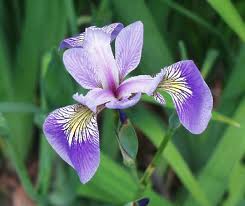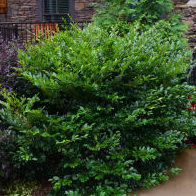Iris versicolor
(Blue Flag, Iris)
$9.99

Hardiness Zones:
3a 3b 4a 4b 5a 5b 6a 6b 7a 7b 8a 8b 9a 9b
Quick Overview:
Iris veriscolor, commonly called northern blue flag, is a clump-forming iris that is native to marshes, swamps, wet meadows, ditches and shorelines from Manitoba to Nova Scotia south to Virginia, Ohio, Illinois and Minnesota. It is a marginal aquatic plant that forms a clump of narrow, arching-to-erect, sword-shaped, blue-green leaves (to 24″ long and 1″ wide). Flowering stalks rise from the clump to 30″ tall in late spring, with each stalk producing 3-5 bluish-purple flowers (to 4″ wide) with bold purple veining. Falls (sepals) have a central yellow blotch surrounded by a white zone. Clumps spread slowly by tough, creeping rhizomes. Northern blue flag thrives in wetland habitats frequented by rushes and sedges (the “flag” part of the common name comes from the middle English word flagge meaning rush or reed). Rhizome is poisonous. (Courtesy of Missouri Botanical Gardens Plant Finder)






